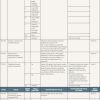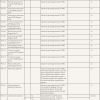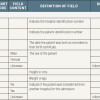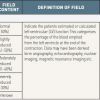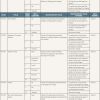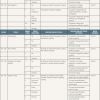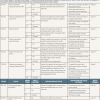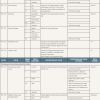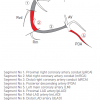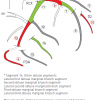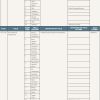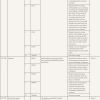Summary
Data collection and analysis are central to understanding the practice of interventional cardiovascular medicine. Whilst the randomised trial is an effective mechanism for comparing treatments, actual practice is best reflected in the unselected observational systems that comprise national and regional registries as well as local audit. Interpreting data from such a wide variety of sources can be confounded by a lack of uniformity in definitions and in what is considered essential to record. With the aim of harmonising data standards , under the auspices of the European union during the Irish presidency (2004), a data framework, consisting of three modules (ACS, PCI, EP), was developed and promulgated by the European Society of Cardiology. This work is acknowledged and the PCI module reproduced here to emphasise its continued important role in European interventional cardiology.
Acknowledgements
The CARDS co-ordination committee chaired by Prof Maarten L Simoons and the CARDS expert committee on PCI: Dr Anselm K Gitt, Dr Roger Boyle, Ms Rachel Flynn, Prof. Ricardo Seabra-Gomes, Dr José Maria Hernåndez, Prof Ciro Indolfi, Dr Peter Ludman, Prof Jean Marco, Dr Tage Nilsson, Dr Emer Shelley, Dr Declan Sufrue, Prof Jan GP Tijssen, Prof Eric Van Belle.
Dr Yanish Purmah for assistance with the preparation of this annexe.
PCI data standards structure
HEADINGS
Field ID number
Each data filed has an identification number. data items common to the three modules [CCU/ACS, PCI and EP] have the same field number.
Field name
This is a prompt or title of a field that could be used on a data entry form or screen, for example date of birth. (date of birth italicisé SVP)
Field content
The field may have options. These contain two items for coding. It contains a short numerical code for classification and also a short string, again identifying a classification. For example the data field Sex, the options (1) Male, (2) Female and (9) Unknown, the numerical codes are (1), (2) and (9) and the short string includes male, female, and unknown.
Definition of field
This is a description/explanation of the field name.
Definition of field options
This is a definition of the field content.
Data format
This identifies the field's format. Examples of formats include date, date and time, numeric, text single value and text multiple values (see next section).
DATA FORMAT
This column identifies to the supplier the type of strorage and the type of processing required for the field.
n1 or n2, etc,
The 'n' indicates the field is numeric. The '1' indicates the maximum length of the value. If 'n1' or 'n2' appears on its own, it will be a numeric value, for example a count. See also 'Code'.
n3.1
The 'n' indicates the field is numeric. The '3.1' indicates the value may have up to three integer place and one decimal place.
An7 or an100, etc
The 'an' indicates the field is alpha numeric. That is, unless otherwise specified, the value may contain any letter, digit or punctuation character. The '7' or '100' indicates the maximum length of the value. If 'an100' appears on its own, the field is free text
Code
The field is a classification field whose permitted values are either defined as part of the dataset
The short form is the value listed in the 'Short code' column.
The long form is: Short-code full-stop space Text-for-long-code.
For example, the Short code and Text for long code columns for Gender contain:
1M
2Femal
Any of the following will be accepted
“1”
“2”
“2. Female”
“1. Male”
The size component of Gender is given as ‘n1’, which is the minimum to store the value. Implementers who decide to store the long form within their database would need to make their own determination of the storage requirements.
Volatile
The majority of codes defined within this dataset will remain unchanged for the life of the dataset. However a small number of code lists identify devices and drugs and new values may be added
Id
The field is an identifier or a code whose permitted values are not defined as part of the dataset or by CCAD. Examples include: NHS Number and GMC number.
Date
The field is a date. [Date (dd/mm/yyyy)]
DateTime
The field is a date and a time [DateTime (dd/mm/yyyy hh:mm)]
Multivalue
This modifier can only occur in conjunction with 'Code' or 'Id'.
The addition of ‘Multivalue’ to the format means that the code value may repeat.
For example: for a field listing previous procedures the codes might be:
0 None
1 Procedure A
2 Procedure B
3 Procedure C
9 Unknown
A patient might have been the subject of none of these procedures, the surgeon might not know the patient's surgical history or the patient might have been the subject of any one, two or all three of the procedures.
For this example field, the maximum number of values is 3 (procedures A, B and C) so implementers would have to determine a method of storing up to three code values in their database. Warning, some multivalue fields are volatile so the maximum number of.
For the transfer file, a semi-colon delimiters to hold the separate code values within a single field. For example, if a patient was the subject to procedures A and B, the following would be correct values for the field:
“1;2”
1. Procedure A;2. Procedure B




